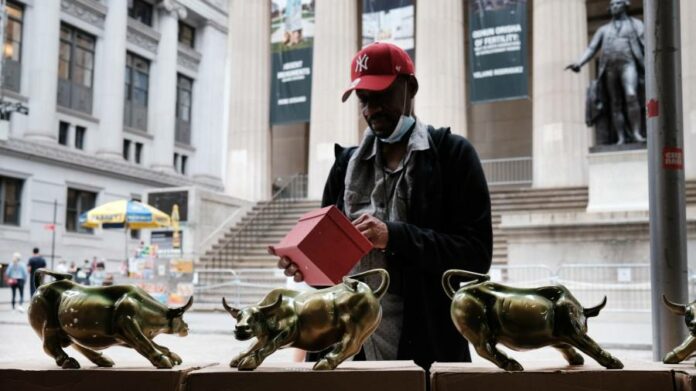The writer is a distinguished senior fellow with the Mercatus Center at George Mason University and a former president of the Federal Reserve Bank of Kansas City
The financial services industry and many of its regulators will tell you that America’s largest banks are well buttressed against a potential 2023 recession as the Federal Reserve raises interest rates to combat inflation. However, the data are less reassuring.
The country’s eight biggest banks have a buffer against unexpected losses of only about the same size that they had in 2006 as we approached the global financial crisis and the recession that followed. This was a period in which hundreds of banks failed and some of the largest were bailed out using billions of dollars in federal assistance.
These eight institutions — called global systemically important banks (GSIBs) because their size and complexity have an outsized impact on the domestic and global economies — now have tangible capital covering on average only 6.7 per cent of their $14.7tn in total assets, according to the most recent Fed data. This crucial measure of financial resilience, called tier one leverage ratio, is only 0.7 percentage points higher than that recorded in 2006.
In other words, the US’s largest, most systemically important banks are almost as highly leveraged today as then. Should the economy experience a significant slowdown, it is highly likely that this level of leverage would negatively affect financial firms and intensify any recession within the US and global economies. Banks should cautiously repair their capital buffers now, before a possible recession undermines the public’s trust in them.
Following the crisis of 2007-09, and in response to public anger, Congress, bank supervisors and the banks themselves raised capital levels within the industry. Between 2008 and 2016, GSIB tier one capital as a proportion of total assets reached a high of 9 per cent. This ratio for community and regional banks also increased to between 10 and 11 per cent.
However, as the economy strengthened and the largest banks recovered from the shock, they successfully lobbied for legislation that would provide relief from certain capital requirements. With slim evidence, they also asserted that they were overcapitalised and that higher tier one capital ratios caused them to take on more risk and to make fewer loans. The drive for lower capital requirements accelerated during the Covid-19 pandemic as an inflow of deposits put pressure on the capital ratios and threatened to lower banks’ return to investors.
Over time, therefore, bank capital standards have slowly deteriorated as reflected in the current numbers. These are of concern today as banks confront the likelihood of increased losses in both their securities and loan portfolios. For example, losses in the banking industry’s investment portfolio for the third quarter of 2022 amounted to nearly $690bn. Of that total, $300bn was attributable to the eight GSIB banks.
Should these largest banks need to sell securities to meet liquidity pressures during an economic slowdown, such sales would turn unrealised losses into real ones and have a significant impact on earnings and capital. In addition, banks are anticipating increased loan problems as the economy contracts. As interest rates rise, asset quality will weaken further, placing pressure on bank capital and undermining bank resilience.
Bank capital should be built up cautiously but swiftly. Interest rates will continue to increase or at least remain high, investment securities will have further price declines and loan quality will deteriorate. There may be legitimate arguments as to why the US will avoid a recession, but one remains likely. Strong bank capital is an essential complement to active monetary policy in moderating the effects of any downturn that may develop.






